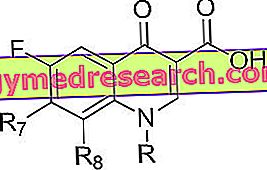Some teachers propose the back as the first style for its presumed respiratory advantages, however this technique has some disadvantages related to the biomechanical levers that act in disadvantageous conditions.
The ideal position of the back swim is more inclined than that which one tends to assume in free style.
The head, slightly bent forward, causes a sinking of the pelvis, allowing the lower limbs to be at the right depth, this is essential for the legs to be able to best develop their action.
The biomechanics of the lower limbs in the back is similar to that of the crawl.
The action of the leg beat develops also on a diagonal plane in order to counterbalance the skidding created by the underwater phase of the stroke.
During the pushing phase, the elbow must be higher than the hand, which pushes downward beyond the thigh.
When the students already have a certain mastery of the back, it is good to teach them the rolling of the shoulders, that is the rotatory movement of the shoulders, which is certainly more hydrodynamic and powerful.
Turning: at a certain distance from the wall, the swimmer begins to rotate on his side by means of a combined action of pulling and pushing arms, until the swimmer himself does not move on his chest, to then begin the actual action of the tack.
In turns, the competitor may touch the wall with any part of the body.
Data sheet
Movement
Alternating and cyclical for both upper and lower limbs
Body position
Supine; the frontal resistance must be reduced to a minimum by allowing the legs to descend to an adequate depth and avoiding that the water passes over the forehead and eyes.
Upper limbs movement
1) recovery action 2) underwater action
1) Recovery or carry-over action:
the first part takes place underwater
the arm's exit is favored by the roll of the shoulders
during the aerial path the arm is relaxed and relaxed
the hand rotates to let the little finger enter first, in order to favor a more hydrodynamic hand entry and to allow the hand to go immediately and better in grip
the outstretched arm enters the water over the shoulder
2) Underwater action:
stands out in: support / grip, traction and thrust;
the action of the hand develops along a curvilinear trajectory both to take advantage of the upward push (Bernoulli's principle), and to find still water by changing the direction in which the force is applied;
at the end of the support phase the elbow flexes to take advantage of a more advantageous lever and to develop an action more parallel to the progress line;
the elbow in the pulling phase must be low compared to the hand in order to make the hand itself a useful vogatory action and also to involve the forearm in the push.
Lower limbs movement
The propulsive action takes place in the movements from bottom to top
The whole limb is involved in the measure, from the hip to the feet
The action must develop completely under water
Depth: 20/30 cm children, 40/50 cm adults
The leg flexion on the thigh can form an angle of 100/110 degrees
The foot, in the ascent, is naturally extended and rotated inside.
Relationship of upper limbs and lower limbs
For each stroke cycle, usually 6 or 4 beats of legs develop
The function of the legs is mainly propulsive
The amplitude of the movement of the legs is considerable (greater than that of the crawl), with the possibility of forming a very advantageous angle for pushing between the leg and the thigh.

//jiri.patera.name/html/uk/entertain.html
Edited by: Lorenzo Boscariol



